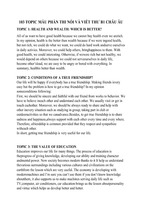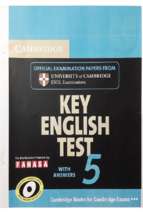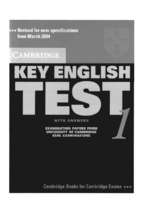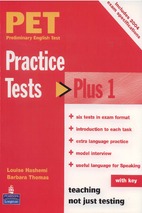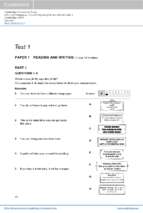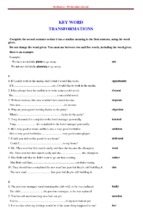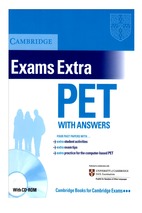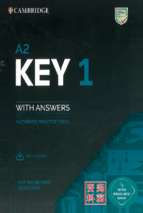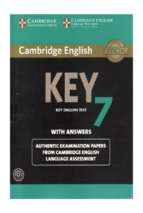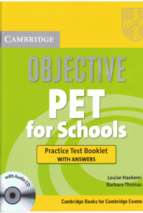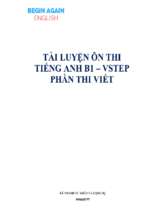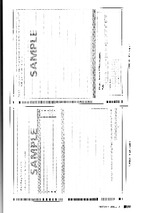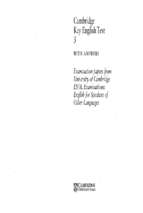VIETNAM NATIONAL UNIVERSITY, HANOI
VIETNAM JAPAN UNIVERSITY
NGUYEN HOAI THU
RESEARCH ON DEVELOPING
SUSTAINABLE AND CLIMATERESILIENT LIVELIHOOD IN GIAO AN
COMMUNE, GIAO THUY DISTRICT,
NAM DINH PROVINCE
MASTER’S THESIS
Hanoi, 2020
VIETNAM NATIONAL UNIVERSITY, HANOI
VIETNAM JAPAN UNIVERSITY
NGUYEN HOAI THU
RESEARCH ON DEVELOPING
SUSTAINABLE AND CLIMATERESILIENT LIVELIHOOD IN GIAO AN
COMMUNE, GIAO THUY DISTRICT,
NAM DINH PROVINCE
MAJOR: CLIMATE CHANGE AND DEVELOPMENT
CODE: 8900201.02QTD
RESEARCH SUPERVISOR:
Prof. DSc. TRUONG QUANG HOC
Dr. KOTERA AKIHIKO
Hanoi, 2020
PLEDGE
I assure that this thesis is the result of my research and has not published.
The use of other research results and other documents must comply with
regulations. The citations and references to documents, books, research papers and
websites must be in the list of references of the thesis.
Author of thesis
(Signature)
i
TABLE OF CONTENTS
PLEDGE .................................................................................................................... i
TABLE OF CONTENTS ......................................................................................... ii
LIST OF TABLES .................................................................................................. iv
LIST OF FIGURES ................................................................................................ vi
LIST OF ABBREVIATIONS................................................................................ vii
ACKNOWLEDGMENTS .................................................................................... viii
CHAPTER 1. INTRODUCTION ............................................................................1
1.1. The necessity of research ................................................................................. 1
1.2. Research objectives and tasks .......................................................................... 2
1.2.1. Research objectives ...................................................................................2
1.2.2. Research tasks ...........................................................................................3
1.3. The research questions and hypotheses ............................................................ 3
1.3.1. Research questions ....................................................................................3
1.3.2. Research hypotheses ..................................................................................4
1.4. Objects and scope of the research .................................................................... 4
1.4.1. Research focus ...........................................................................................4
1.4.2. Research scope ..........................................................................................4
1.5. Literature review .............................................................................................. 4
1.5.1. Studies at the international level ...............................................................5
1.5.2. Studies at the national level .......................................................................8
1.5.3. Studies in the research site ......................................................................10
1.6. Overview of the research site ......................................................................... 11
1.6.1. Natural features .......................................................................................11
1.6.2. Socio-economic features ..........................................................................13
1.6.3. General assessment of natural, economic and social conditions ............15
1.7. Theoretical basis ............................................................................................. 16
1.7.1. Some concepts ..........................................................................................16
1.7.2. Some important contents..........................................................................17
1.7.3. Research framework ................................................................................21
CHAPTER 2. METHODOLOGY .........................................................................22
2.1. Approaches ..................................................................................................... 22
2.1.1. Systematic and interdisciplinary approach .............................................22
2.1.2. Combined top-down and bottom-up approach ........................................23
2.1.3. DFID's sustainable livelihood framework approach ..............................23
2.2. Research methods ........................................................................................... 23
2.2.1. Collecting secondary data .......................................................................23
ii
2.2.2. Collecting primary data ...........................................................................25
2.2.3. Data processing .......................................................................................28
CHAPTER 3. RESULTS AND DISCUSSION .....................................................30
3.1. Current situation of livelihood of Giao An commune .................................... 30
3.1.1. Main livelihood activities ........................................................................30
3.1.2. Analysis of livelihood assets ....................................................................34
3.1.3. Measurement and evaluation of livelihood assets ...................................62
3.2. Climate variation in the research site ............................................................. 63
3.2.1. In the past.................................................................................................63
3.3.2. Climate change and sea level rise scenarios for Giao An commune ......70
3.3. Impacts of climate change on main livelihood activities of Giao An
commune ............................................................................................................... 71
3.3.1. Climate change impacts on production activities....................................72
3.3.2. Climate change impacts on income .........................................................79
3.3.3. Climate change impacts on daily life ......................................................79
3.3.4. Climate change impacts on health ...........................................................80
3.3.5. Climate change impacts on infrastructures .............................................80
3.4. Resilience to climate change of Giao An commune ...................................... 82
3.4.1. Resilience to climate change of households in Giao An commune .........83
3.4.2. Resilience to climate change of local authorities ....................................85
3.5. Solutions for developing sustainable and climate-resilient livelihoods ......... 88
3.5.1. Proposed principle...................................................................................88
3.5.2. Groups of solutions ..................................................................................89
CHAPTER 4. CONCLUSION AND RECOMMENDATIONS .........................95
REFERENCES ........................................................................................................97
LIST OF THE AUTHOR'S PUBLICATIONS ................................................. 100
APPENDIX ........................................................................................................... 101
iii
LIST OF TABLES
Table 1.1. Demographics by hamlets of Giao An commune in 2017 ......................14
Table 1.2. Opportunities and difficulties in natural, economic and social conditions
of Giao An commune ................................................................................................15
Table 1.3. The criteria of climate-resilient livelihood ..............................................20
Table 2.1. Number of households need interviewing by each hamlet .....................26
Table 2.2. Reasons for doing many works and jobs at the same time of the survey
respondents ................................................................................................................27
Table 2.3. The score classification of livelihood assets ...........................................29
Table 2.4. Table of converting percentages into scores ...........................................29
Table 3.1. Livelihood assets assessed by the author ................................................34
Table 3.2. The educational level of survey respondents ..........................................35
Table 3.3. Sources survey participants gained agricultural production experience .36
Table 3.4. Seniority in agricultural and fishery production activities of surveyed
subjects ......................................................................................................................37
Table 3.5. Survey participants self-assessed the level of confidence in their
occupational skills .....................................................................................................37
Table 3.6. Information channels on climate change that respondents received by ..38
Table 3.7. The definition of climate change was given by the survey participants .38
Table 3.8. The causes of climate change were identified by the survey participants
...................................................................................................................................39
Table 3.9. Surveyed households self-assessed the importance level of the Commune
Agricultural Production Steering Board, Cooperative, Farmer's Association to their
production activities ..................................................................................................41
Table 3.10. Surveyed households self-assessed the importance level of other
organizations and unions to their production activities ............................................43
Table 3.11. Statistics of types of land according to many different purposes..........45
Table 3.12. Surveyed households assess the quality of land and water they used ...47
Table 3.13. Surveyed participants assessed the role of mangroves .........................49
Table 3.14. Difficulties/challenges faced by mangroves and mudflats in the opinion
of the survey participants ..........................................................................................49
Table 3.15. The percentage of house types that the survey participants were living
in ................................................................................................................................50
Table 3.16. The percentage of appliances was owned by surveyed households ......51
Table 3.17. Assessment of households participating in the survey on infrastructure
system in Giao An commune ....................................................................................56
iv
Table 3.18. Assessment of survey respondents about extreme events that have
occurred in Giao An commune in recent year ..........................................................66
Table 3.19. Assessment of survey respondents about the frequency of extreme
events in Giao An in recent year ...............................................................................66
Table 3.20. Assessment of survey respondents about the intensity of extreme events
in Giao An in recent year ..........................................................................................67
Table 3.21. The calendar of events about extreme events........................................68
Table 3.22. The increase in temperature in Giao Thuy district compared to the
baseline period under RCP 4.5 scenario ...................................................................70
Table 3.23. The increase in rainfall in Giao Thuy district compared to the baseline
period under RCP 4.5 scenario..................................................................................71
Table 3.24. Seasonal calendar in agricultural and fishery activities of households in
Giao An commune ....................................................................................................73
Table 3.25. Assessment of the extreme events and climate change impacts on rice
farming ......................................................................................................................76
Table 3.26. Assessment of the extreme events and climate change impacts on
vegetable farming ......................................................................................................77
Table 3.27. Assessment of the extreme events and climate change impacts on
livestock husbandry ...................................................................................................77
Table 3.28. Assessment of the extreme events and climate change impacts on
aquaculture ................................................................................................................78
Table 3.29. Assessment of the extreme events and climate change impacts on
family income ............................................................................................................79
Table 3.30. Assessment of the extreme events and climate change impacts on daily
life..............................................................................................................................79
Table 3.31. Assessment of the extreme events and climate change impacts on health
...................................................................................................................................80
Table 3.32. Assessment of the extreme events and climate change impacts on
infrastructures ............................................................................................................81
Table 3.33. Summary of the impacts of extreme events by climate change on the
livelihood of people in Giao An commune ...............................................................81
Table 3.34. Preparations of households participating in the survey before the
disaster occurs ...........................................................................................................83
Table 3.35. Recommendations of the households participating in the survey to
reduce the risk of extreme events in production activities ........................................84
v
LIST OF FIGURES
Figure 1.1. Map of disaster alerts in Giao An commune .........................................13
Figure 1.2. The sustainable livelihood framework...................................................19
Figure 1.3. Analytical framework ............................................................................21
Figure 1.4. Logical framework .................................................................................22
Figure 2.1. Primary and secondary occupations of the survey respondents ............27
Figure 3.1. Different kinds of livelihoods existing in Giao An commune...............30
Figure 3.2. Agricultural livelihood activities took place in Giao An commune ......31
Figure 3.3. Fishery livelihood activities took place in Giao An commune .............31
Figure 3.4. Percentage of survey participants trained in agriculture and fishery.....36
Figure 3.5. Surveyed households self-assessed the importance level of local
authorities to their production activities ....................................................................... 44
Figure 3.6. Survey respondents assessed the quality of their houses .......................50
Figure 3.7. Surveyed subjects assessed the quality of their household devices and
appliances ..................................................................................................................51
Figure 3.8. The main sources of income of the surveyed households .....................58
Figure 3.9. Surveyed households and local authorities assessed agricultural and
fishery livelihood assets in Giao An commune ........................................................63
Figure 3.10. The trendline of average annual air temperature in Nam Dinh province
in the period of 1989 – 2018 .....................................................................................64
Figure 3.11. The maximum, minimum and average temperature in many years in
Nam Dinh province in the period of 1989 – 2018 ....................................................64
Figure 3.12. The trendline of total annual rainfall in Nam Dinh province in the
period of 1989 – 2018 ...............................................................................................65
vi
LIST OF ABBREVIATIONS
CBA
CC
COP
DFID
IPCC
LEI
LVI
MONRE
PRA
RRD
SLF
SLR
UNCED
XTNP
:
:
:
:
:
:
:
:
:
:
:
:
:
:
Community based approach
Climate change
Conference of the Parties
Department for International Development
Intergovernmental Panel on Climate Change
Livelihood effect index
Livelihood vulnerability index
Ministry of Natural Resources and Environment
Participatory Rural Appraisal
Red River Delta
Sustainable livelihood framework
Sea level rise
United Nations Conference on Environment and Development
Xuan Thuy National Park
vii
ACKNOWLEDGMENTS
Foremost, I would like to express the deepest gratitude to Prof. DSc. Truong
Quang Hoc and Dr. Kotera Akihiko, my supervisors, for their enthusiastic guidance,
encouragement and useful critiques for my master thesis.
My appreciation also extends to all the teachers and staff of the Master’s
Program in Climate Change and Development - Vietnam Japan University for their
help and encouragement. In particular, I would like to thank Ms. Bui Thi Hoa for
her enthusiastic support during the fieldwork in Giao An commune.
I am fully indebted to the officials and people of Giao An commune, Giao
Thuy district, Nam Dinh province for providing information to help me complete
this thesis.
Last but not the least, I wish to acknowledge the support and great love of
my family, my friends and those who kept me going on and the thesis would not
have been possible without their input.
viii
CHAPTER 1. INTRODUCTION
1.1. The necessity of research
Climate change (CC) is considered to be a global problem and the most serious
challenge for all mankind. In which, Vietnam is one of the countries most heavily
affected by CC with major manifestations including increasing temperatures, unstable
rainfall, rising sea levels and the changes in frequency and intensity of extreme
weather events. All not only affect economic development but also create pressures on
community, especially agricultural and fishery-based livelihoods which are still highly
dependent on nature.
The development of sustainable and climate-resilient livelihood is considered to
an effective solution that enables solving CC issues, reducing disaster risks and
developing sustainably (Ayeb-Karlsson et al., 2015; Tanner et al., 2015; Amin et al.,
2018).
According to CC scenario of the Ministry of Natural Resources and
Environment (MONRE) based on RCP 4.5 of The Intergovernmental Panel on
Climate Change (IPCC), in 2100, Vietnam's surface temperatures are predicted to
increase in a range of 1.9˚ - 2.4˚C in the North and 1.7˚- 1.9˚C in the South while the
annual rainfall would commonly increase by 5 - 10%. Also, extreme events would
occur more frequently and seriously. Sea level in the South would be higher than the
North at the end of the 21st century. If the sea level rises 100 cm, about 16.8% of the
total area of Red River Delta (RRD) will be affected. In particular, Nam Dinh, located
at the southern gateway of the RRD with a coastline of 72 km long and 04 large
estuaries (such as Ba Lat, Day, Lach Giang and Ha Lan), is the most vulnerable
province because of having the highest risk of inundation (58.0%) (MONRE, 2016).
Nam Dinh province often has to face many serious challenges. Extreme
weather events associated with sea level rise (SLR) and saline intrusion negatively
impact the production activities of the people here. If the sea level increases by 12 - 74
cm by 2100 compared to the period 1980 - 1999, the total flooded area is estimated at
1
61.71 km2. In particular, Giao Thuy district has the highest flooded area of about
34.27 km2 (People's Committee of Nam Dinh province, 2011).
Giao An, a commune located in the southeast of Giao Thuy district, Nam Dinh
province, is one of five communes in the buffer zone of Xuan Thuy National Park
(XTNP). Its natural conditions are very favorable for the development of agriculture
and fishery. However, with low topography, Giao An is regularly affected by extreme
events as well as CC. Take typhoon Son Tinh in 2012 as an example. It had caused
damage to 60% of the hybrid rice area, 100% of the vegetable farming area, 50% of
the clam farming area and 80% of the freshwater aquaculture area in Giao An.
Recently, typhoon No. 1 in 2016 caused 100% inundation of vegetables and newly
transplanted rice, as well as many aquatic animals in ponds, cattle and poultry, died.
The total losses amounted to VND 26.7 billion (People's Committee of Giao An
commune, 2017c). Meanwhile, the main livelihoods of the commune are agriculture,
aquaculture and fishing which are closely attached and dependent on meteorological
and hydrological regimes of the region. Consequently, if there are any negative
changes in climate, it can adversely impact the livelihood of people here. However, in
Vietnam as well as in Giao An, there are no studies on climate-resilient livelihoods.
In this context, the author selected the topic "Research on developing
sustainable and climate-resilient livelihood in Giao An commune, Giao Thuy district,
Nam Dinh province". The study focused on agricultural livelihoods comprising rice
farming, vegetable farming and livestock husbandry, as well as fishery livelihoods
including fishing and aquaculture. Research outcomes are expected to contribute more
useful information and recommendations for livelihood development in the research site
in particular and also to be a source for references to areas with similar conditions in
general.
1.2. Research objectives and tasks
1.2.1. Research objectives
- The current situation of livelihoods in Giao An commune are assessed;
2
- The climate variation in past, present and future in the research site are
identified;
- The impacts of CC on livelihoods in the research site are assessed;
- The resilience to CC of Giao An commune is investigated;
- The solutions to develop sustainable and climate-resilient livelihoods for Giao
An commune are proposed.
1.2.2. Research tasks
- Finding out the theoretical basis and research results related to develop
sustainable and climate-resilience livelihoods;
- Assessing the current situation of livelihoods in the research site (according to
human, natural, physical, social and financial capitals);
- Identifying the climate variation in past, present and future in the research
site;
- Assessing CC impacts on livelihoods in the research site;
- Investigating the resilience to CC of Giao An commune;
- Proposing solutions to develop sustainable and climate-resilient livelihoods
for the research site.
1.3. The research questions and hypotheses
1.3.1. Research questions
(1) What is the current situation of livelihoods in the research site?
(2) How did climate variations occur in the research site?
(3) How has CC affected the livelihoods of Giao An commune community?
(4) What is the climate resilience of Giao An commune?
3
(5) What are the solutions for developing sustainable and climate-resilient for
the research site?
1.3.2. Research hypotheses
(1) Giao An commune has a variety of livelihoods. In which, agriculture and
fishery are main livelihood activities but the available livelihood assets of people in
Giao An commune are limited.
(2) Climate change has been presented in Giao An commune and is expected to
become more and more complicated in the future.
(3) The livelihood of people in Giao An commune negatively impacts by CC.
(4) The resilience level of Giao An commune is moderate.
(5) General solution to develop sustainable and climate-resilient livelihoods for
Giao An commune is to raise awareness of local people about CC.
1.4. Objects and scope of the research
1.4.1. Research focus
Developing sustainable and climate-resilient livelihoods in Giao An commune,
Giao Thuy district, Nam Dinh province.
1.4.2. Research scope
- Geographical scope: Giao An commune, Giao Thuy district, Nam Dinh
province.
- Time scope: The research were conducted from 2019 to 2020.
1.5. Literature review
In this section, the thesis overviews the situation of research at the international
and national level as well as in the study area under three topics as follows (a)
livelihoods/sustainable livelihoods; (b) CC and its impacts on agricultural and fishery
livelihoods; and (c) building climate-resilient livelihoods.
4
1.5.1. Studies at the international level
a. Livelihoods/sustainable livelihoods
Since the United Nations Conference on Environment and Development
(UNCED) (also known as the Earth Summit) in Rio de Janeiro in Brazil in 1992,
sustainable development has become a common trend that all humanity is working
towards. Accordingly, in rural development, there is a trend towards sustainable
livelihood development including poverty reduction goals.
The term “sustainable livelihood” was first introduced in the 1987 Brundtland
Report (also known as Our Common Future) of the World Commission on
Environment and Development as a way to integrate economy, society, and ecology in
a policy framework. Moreover, sustainable livelihoods are defined as sufficient
guarantee of people's needs including food, money and other assets (WCED, 1987).
Previously, livelihood is understood as a means of earning a living to serve the
basic needs of life (For example, food, houses, clothes, medicine...). The concept of
“sustainable livelihood” is also understood as an effort to reduce poverty (Krantz,
2001). However, these concepts do not cover all aspects of livelihood activities,
especially assets that limit or enhance human capacity.
The term “sustainable livelihood” continues to be expanded by Robert
Chambers and Gordon Conway. Livelihoods comprise the capabilities, assets (store,
resources, claim and access) and activities required for a means of living. Livelihoods
are only sustainable when they can cope and recover from shocks, maintain or
improve their capacity and assets and provide sustainable livelihood opportunities for
successive generations; as well as contribute to other livelihoods at the local or global
level and in the short and long term (Chambers and Conway, 1992).
Based on the study of Chambers and Robert, there have been a lot of arguments
adjusted for the concept of “sustainable livelihood”. Of particular importance are the
contributions of Scoones; researchers of the Institute of Development Studies at the
University of Sussex, UK; and DFID.
5
b. Climate change and its impacts on agricultural and fishery livelihoods
In the 21st century, CC is a global problem, the most serious challenge for
mankind and the concern of most countries. In 1896, CC issue through quantification
of carbon dioxide contribution in causing the greenhouse effect was mentioned by Mr.
Svante Arrhenius, a Swedish scientist.
In the late 1980s, IPCC was established with the United Nations Environment
Programme co-founded (in 1988) to assess "scientific, technical and socio-economic
information to allow to understand the risks of CC caused by human activities”
(IPCC, 2007). Since then, there have been many international organizations and
scientists assessing the impacts of CC on the fields in regions and territories.
All studies and deployments on CC have been analyzed and synthesized in 5
reports of IPCC (First Assessment Report, 1990; Second Assessment Report, 1999;
Third Assessment Report, 2001; Fourth Assessment report, 2007 and Fifth
Assessment Report, 2014). In particular, IPCC's Fourth Assessment Report received
the Nobel Peace Prize with Al Gore. All reports conclude that human activities are the
main cause of CC and CC has been creating climate shocks for all of humanity,
especially agricultural production and fisheries (IPCC, 2007; IPCC, 2014).
In rural areas, the majority of livelihoods are based on natural resources such as
agricultural or fishery livelihoods which are very sensitive to changes in weather
conditions (Altieri and Koohafkan, 2008; Dzvimbo et al., 2017; Araro et al., 2019).
Therefore, any small change in weather conditions can have a great impact on the
well-being of rural households in developing countries (Altieri and Koohafkan, 2008;
Musemwa et al., 2012; Dzvimbo et al., 2017; Araro et al., 2019). In other words, CC
has a huge effect on agricultural, fishery production and livelihood strategies of rural
households.
c. Building climate-resilient livelihoods
Resilience is considered a common research and policy concept in the context
of CC adaptation and development. on environmental change (Adger et al., 2011).
According to Tanner et al. (2015), the concept of resilience needs to pay more
attention to people's livelihood activities if they want to address the negative impacts
6
of CC, the limits of adaptation strategies as well as public implementation. Climateresilient livelihood is defined as the power of all generations to maintain and improve
their
livelihood
opportunities
and
well-being
despite
environmental
disturbances/fluctuations, economic, social and political. This is underpinned by
empowerment, by action, placed in dynamic social transitions.
According to the working paper of the United Nations University, Institute for
Environment and Human Security (2015) proposed 6 global policy recommendations
that are directly related to climate-resilient livelihoods for developing a more
sustainable future including (1) applying the human rights perspective to resilient
livelihoods; (2) addressing the root causes of vulnerability thereby enabling the
strengthening of the livelihood system; (3) empowering the poor and vulnerable as a
key pillar in building resilient livelihoods; (4) assisting those who cannot migrate to
places affected by climate stress; (5) policy frameworks in response should include a
broader understanding of socio-cultural values (such as identity); and (6) developing
robust methods and large datasets to support resilient livelihood support research.
“Action research on climate-resilient livelihoods for land-poor and land-less
people” project of Integrated Community based Adaptation in the Mekong also
mentions the serious impact of CC on the future survival and development of
livelihood activities in An Giang and Soc Trang Province especially focuses on
women, land-less, land-poor, ethnic minorities and other vulnerable groups.
Therefore, the project proposes climate-resilient livelihood options for target groups
such as azolla (water fern) production, organic mushroom farming, organic onionbased rotational integrated crops management farming, organic bio-fertilizer
production… (CARE, 2015).
The climate-resilient livelihood activity in the south-central coastal region of
Bangladesh (Amin et al., 2018) shows the situation in developing countries on the
resilience of livelihood activities that are limited when not develop climate-resilient
alternative livelihood activities, including Bangladesh. Housework and fishing are key
livelihoods for people in the Barisal district. CC impacts on livelihood activities in the
area are medium-high level while the resilience of this traditional livelihood is 36%.
The study calculates a person's annual loss if they do not have any resilience to
climate and natural disasters in the study area.
7
1.5.2. Studies at the national level
a. Livelihoods/Sustainable livelihoods
In Vietnam, there have been many scientific conferences and projects related to
sustainable livelihoods such as the workshop "Sustainable livelihoods for ethnic
minorities in the Northeast provinces" on December 21st, 2019 in Tuyen Quang
province; the workshop "Sustainable livelihood development, sustainable poverty
reduction for the period 2016-2020" on March 1st, 2016 in Ben Tre province; the
project "Improving the community capacity in developing and demonstrate
sustainable livelihood model to less depend on Bach Ma National Park” in Nam Dong
district, Thua Thien Hue province in 2020; the project "Green Ecological Light" on
November 25th, 2019 in Mai Chau district, Hoa Binh province…
A lot of research on this issue use DFID's sustainable livelihood framework
approach through analysis of assets. Bui Van Tuan (2015) on the strengths and
weaknesses in the livelihoods of communities in Bac Tu Liem district, Hanoi city used
this framework and proposed solutions to develop more sustainable livelihoods such as
strengthening close cooperation between the authorities and local people; formulating
policies to support capitals; creating linkages between production, processing and
market-seeking activities; improving the quality of human resources; investing in
infrastructure as well as diversifying industries and sources of income. Nguyen Hai Nui
et al. (2018) assessed the degree of forest dependence to develop livelihoods of
households were still quite high and the users tended to be less sustainable. To develop
sustainable livelihoods in the context of limited access to forest resources, policyrelated solutions have been proposed.
b. Climate change and its impacts on agricultural and fishery livelihoods
In Vietnam, changes in temperature, rainfall and rising sea levels along with the
irregularities of extreme weather events are increasingly threatening production and
people's lives. Agricultural livelihoods are highly dependent on natural resources (such as
climate, soil, water ...) so the level of exposure to CC impacts is very large. These impacts
include: (1) Shrinking and loss of coastal arable land due to SLR, due to erosion leading
to increase riverbank erosion and due to saline intrusion causing increase drought; (2)
Increasing the area of land affected by salinity due to SLR and stronger evaporation; (3)
8
Increasing soil degradation due to increasing temperature and drought; (4) Increasing
erosion process due to increased rainfall and rainfall intensity; (5) Increasing crop losses,
reducing crop and livestock yields due to the direct and indirect effects of the increase in
average temperature, weather anomalies, extreme events (typhoons, floods, droughts,
damaging colds...); (6) Changes in crop seasons (MONRE and UNDP, 2010).
Tran Tho Dat and Vu Thi Hoai Thu (2012) show the impacts of CC on coastal
areas, the vulnerability of coastal livelihoods to the impacts of CC, the adaptive capacity
of coastal livelihoods to the impacts of CC, and livelihood support to adapt to CC. The
book emphasizes the important role of household livelihood assets. Meanwhile, CC is
one of the factors in the context of vulnerability, affecting livelihood assets and thereby
changing livelihood strategies and livelihood outcomes of households.
Le Nguyen Thu Huong (2014) points out that the livelihood activities of people
in Giao Xuan commune, Giao Thuy district, Nam Dinh province are greatly affected
by natural disasters and climate change. Cultivation, livestock husbandry and
aquaculture activities as well as other livelihood activities such as tourism and trading
are all impacted by typhoons, heavy rains, floods, droughts... In particular, agricultural
livelihoods are most vulnerable, followed by aquaculture and fishing.
Hoang Thi Ngoc Ha (2015) mentions that CC and SLR have a strong impact on
livelihoods of households in Cat Hai Island, Cat Hai District, Hai Phong city such as
reducing the area and output of crops - livestock, increasing risks for aquaculture and
seafood processing, narrowing coastal fishing grounds, risk of losing salt making... All of
them lead to loss of household income, increase unemployment, change and find new
jobs. In addition, CC also adversely affects environmental sanitation and people's health.
c. Building climate-resilient livelihoods
In Vietnam, the term climate-resilient livelihoods are not popular, but usually
often livelihoods adaptation to CC or sustainable livelihoods and adaptation to CC.
There is no specific definition of this term in Vietnam but it has been mentioned in
several workshops. In the conference "Developing climate-resilient livelihoods based
on ecosystems approach", Prof. DSc. Truong Quang Hoc said that building climateresilient livelihoods should enhance resilience in both communities and ecosystems
through the management and conservation of natural resources, watershed
9
management... Developing climate-resilient livelihoods is strengthening ecosystembased CC adaptation models and community-based livelihood models adaptation to CC.
=> Through the studies above, CC is already present and having strong impacts
on all sectors and areas in life. In particular, agricultural and fishery livelihoods are the
most vulnerable and highly affected by CC because these activities are mainly based on
nature. There have been many studies on the situation of livelihoods, sustainable
livelihoods as well as impacts of CC on livelihoods and proposing solutions for
developing sustainable and adaptive livelihoods. However, in Vietnam, there are still not
many workshops, projects or researches related to building climate-resilient livelihoods.
Meanwhile, this is considered as a constructive boundary object to address issues related
to CC, disaster risk reduction and developing in a more sustainable and resilient manner.
1.5.3. Studies in the research site
There have been many topics, projects and researches related to CC carried out
in Giao An commune in particular and Giao Thuy district in general.
The project "Strengthening resilience of Vietnam's coastal biosphere reserves
against CC and environmental catastrophe through resource management and
sustainable livelihood development" (2011 - 2013) was conducted by Swedish
International Development Cooperation Agency, the Swedish Embassy. The project
had an overall objective of improving the resilience to CC and environmental disasters
of the biosphere reserve, contributing to ensuring the harmony between conservation
and development through enhancing the management of marine resources and the
development of sustainable livelihoods for the community.
Wetlands Alliance Program (2007 - 2013) supported livelihood development
for communities in the buffer zone through the establishment of XTNP Mushroom
Club; supporting honey production in Giao An; developing gardens and VAC models
in Giao Xuan, Giao An and Giao Hai communes.
The project "Building partnerships for Improving Vietnam’s coastal
communities’ adaptive capacity to impacts of climate changes" (2012-2014) funded
by the Australian Agency for International Development (AusAID) implemented in
10
- Xem thêm -


